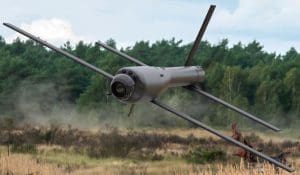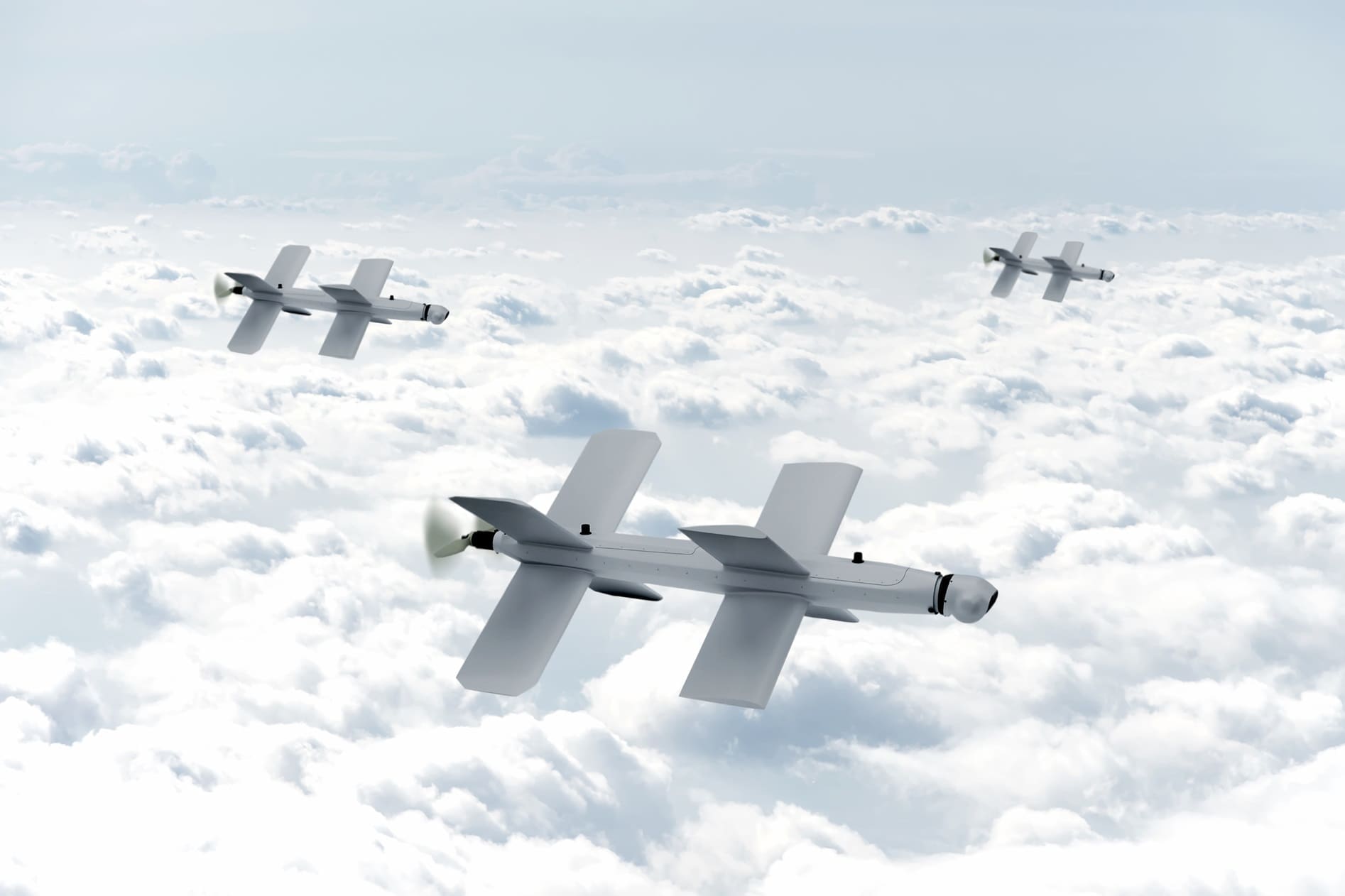The global loitering munitions market is seeing seismic growth as geopolitical instability and ongoing innovation reimagine device capabilities and potential. Maris-Tech, a pioneer in high-performance AI edge video and analytics technologies, describes recent trends in the loitering munitions market.
According to GlobalData’s Thematic Intelligence report ‘Drones in Aerospace and Defense’, the global loitering munitions market is expected to see growth of up to nearly $18 billion thanks to loitering munitions. This is a compound annual growth rate of 5.1% from a 2023 evaluation of $10.93 billion and showcases a market rapidly evolving to meet demand. The market’s growth is being driven by geopolitical instability alongside global military modernization initiatives, a need for more agility, and increased demand for defense solutions that can adapt at speed. As MarketWide Research highlighted, the market is in line for sustained growth with anticipated evolutionary changes in UAV design and ‘autonomy, sensor integration and collaborative capabilities.’
What Are Loitering Munitions?
Loitering munitions are drones used as aerial weapons. They loiter around a specific area and attack targets by crashing into them. Also known as suicide or kamikaze drones, the benefit of these loitering munitions lies in their ability to hang over a target area while leveraging next-generation intelligent video surveillance and analytics to identify threats, targets and strike zones with impressive accuracy. Agile and adaptable, these drones can undertake precision attacks with payloads. They are invaluable tools in gathering intelligence, and enhance battlefield tactics.
As the Ukraine-Russia conflict continues and geopolitical instability escalates, NATO countries have increased their defensive spend as they focus on their own military capabilities and forces. According to Fortune Business Insights, many European countries increased their spend on military defense – Germany’s budget rose by 2% of its gross domestic product, and both Poland and Denmark revealed that their defense budgets were increasing.
The Evolution of Loitering Munitions: Trends in 2024
According to GlobalData report, there are several key trends currently influencing the loitering munition systems sector that include: swarm technology, artificial intelligence (AI), vertical attack, military off-the-shelf (MOTS), commercial off-the-shelf (COTS), 3D printing, miniaturization and scalability, composites, mission modules, and battery technology. Currently, the United States is leading the way in innovation within the munition systems space which is an interesting development considering that Europe is considered the birthplace of the technology. From the 1970s one-way attack munitions driven by radar-homing, to the Drohne Anti-Radar drone of the 1980s, the industry has undergone a remarkable evolution as the loitering munition UAV devices adapted to the conflicts and the threats.
Their use in the Ukraine-Russia conflict, the Yemen proxy war, and the war between Armenia and Azerbaijan, has proven their value. Now, technology is proving their ubiquity. In 2023, the US Marine Corps announced that they would be focusing on swarming munitions as they can be used from helicopters and allow for the military to move away from heavy munitions, armored vehicles, and infantry. Three of the most interesting evolutions on the market right now are:
01: Loitering Munition Swarm Technology
There are several types of loitering munition that can be used to form a swarm. While this capability can potentially be more expensive as the drones need the functionality to engage and connect as a whole, there are immense benefits to leveraging this capability.
Swarm technology is increasingly gaining significance in military operations due to its potential to revolutionize tactics, enhance capabilities, and mitigate risks. Using drones operating collaboratively as a cohesive unit, the military can overwhelm adversaries through sheer numbers and coordinated maneuvers, providing a force multiplier effect. Swarms can execute surveillance, reconnaissance, target identification, and even kinetic strikes with minimal human intervention while operating effectively in denied or contested environments.
Learn about Maris Tech’s military situational awareness solutions.
02: Artificial Intelligence in Loitering Munition Systems
Artificial intelligence (AI) is having an extraordinary impact on the global loitering munitions market. Using AI-driven intelligence, analytics, voice recognition, situational awareness technology, and automation, loitering munitions have been given a powerful boost. While there’s a need for conversations around the ethical use of AI and the risks that it introduces, there is no denying that it allows for loitering munitions systems to gain even richer precision, targeting and control.
One device that has recently gained visibility is the Harpy, an anti-radiation loitering munition with the ability to loiter within an area for up to nine hours. Itsimpressive in-air time is bolstered by its autonomous capabilities, although the device is still tightly managed within controls and mandates set by people.

03: Mission Modules in Munition Systems
Mission modules add a layer of versatility to the loitering munitions table. Using modules, the drones can be adapted to suit different missions and scenarios, and can be interchanged to provide the drone with the tools it needs to undertake specific mission requirements. From reconnaissance to target acquisition and strike missions, each module allows for the loitering munitions to be deployed in a wide range of roles.
These modules provide military forces with flexibility and dynamic control, plus they allow for improved versatility as loitering munitions can then be deployed optimally across different mission types.
Leading Companies in the Global Loitering Munitions Market
The key players in the market at the moment include: Autel Robotics, DJI, Parrot, Skydio, Air Hogs, Emax, Amazon, Alphabet, UVify, Delair, Drone Volt, Boeing, Airbus, Lockheed Martin, Baykar, RTX Corp, Turkish Aerospace Industries and Palantir, among others. Another key player is Maris-Tech, providing intelligent video transmission technology, low-latency video encoding and decoding, and real-time intelligence gathering to create advanced AI systems for drones and autonomous vehicles.
The Maris-Tech Advantage for Loitering Munitions
Maris-Tech’s Jupiter Nano blends all the above mentioned features alongside intelligent video transmission technologies, high quality video, superior energy efficiency and miniaturized form factors to provide companies creating loitering munitions with exactly what they need to innovate across a wide range of platforms and applications.
With AI compute, ultra-low-latency streaming solutions, and a proven track record partnering with leading organizations around the world, Maris-Tech sits on the edge of loitering munitions potential. Cutting-edge AI edge video and analytics technologies tailored for defense applications brings unparalleled expertise and reliability to organizations. In addition, the miniature, high-quality, low-latency video, audio, and telemetry data capture technologies are perfectly suited for integration into loitering munitions, enabling real-time situational awareness and precise targeting capabilities.
Maris-Tech’s commitment to continuous innovation and customer satisfaction makes us the perfect partner for enhancing the performance and effectiveness of loitering munitions in modern military operations. Discover the latest intelligent video solutions at Maris-Tech.


